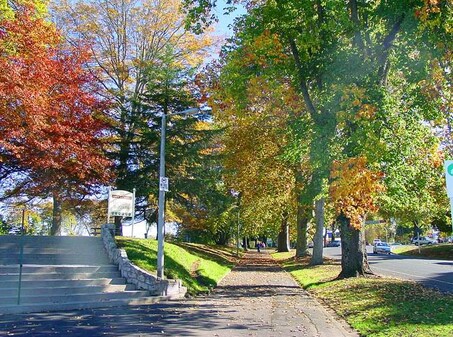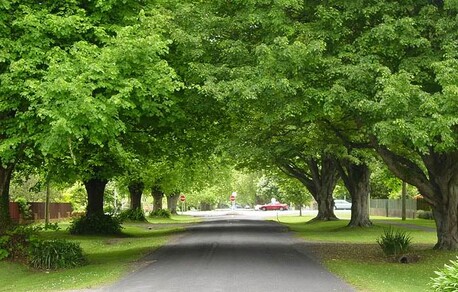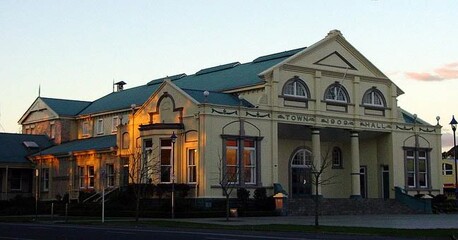About Cambridge
Cambridge is situated in the heart of the Waikato region. In fact it is also in the geographic centre of the North Island so the town is very central to major cities and beaches.
Cambridge was established as a British Army fort town in 1864 as the southern-most outpost of colonialism before the wild frontiers of the King Country. It was not named after the famous university city as many people think, but instead after the Duke of Cambridge, who was then Commander-in-Chief of the British Army, and cousin to Queen Victoria.
Though it was established on the dangerous edge of civilisation, just on the border with the wild, savage country, the fort town quickly grew into a thriving community due to the fact that this was also the last place that the Waikato River steam ships could reach, plying their way up and down the river from the north.
So settlers arrived and quickly established farms among the lush Waikato countryside, which was already well established by local Maori as a crop growing region. Cambridge's first major industry was dairy products, the land producing the finest milk and cheese - with the Anchor Dairy Factory being founded in Cambridge. That original factory was only the second dairy company set up in New Zealand at the time, and it boomed and expanded as its products were traded up the river to Hamilton and Auckland and beyond. Now the company reaches around the world, still branded in many places as Anchor but now under the dairy giant umbrella known as Fonterra, who's Hautapu factory still has a major presence on the Cambridge landscape and its economy.
The Army eventually left and the town developed. As well as the dairy industry the town has developed many other industries over the years. A well known facet of Cambridge's rural life is the equine community in Cambridge, which is considered second to none. It ranges from thoroughbred race horse breeding and training, to polo horses and players, to show jumpers and dressage, and much more.
There are many other national and international sports represented by the people of Cambridge however, from rowing to cycling to softball to the ever important All Black rugby. A walk of fame of the town's sporting elite can be seen in Duke Street, in the central business district.
As well as sporting heroes like Olympic medallist Mark Todd, and motor racing drivers Angus Fogg and Nick Ross, Cambridge has produced many other people notable in all fields of life, from entertainers like New Zealand's most loved comedian Billy T. James who was born and bred in Cambridge, to the rock band The Datsuns; and on other spheres there has been underwater explorer Reece Discombe. and Battle of Britain fighter ace Edward "Bill" Wells, among many other notable townsfolk.
Cambridge has a proud military past too, not just in its early days as a fortress for the colonial army when New Zealand's first Victoria Cross member Gustavus Von Tempsky was stationed in the town, but later on too. Cambridge men and women served in the Boer War, World War One, World War Two, Korea, Malaya, Vietnam and more recent conflicts and peacekeeping efforts too. The town has had some very notable soldiers, sailors and airmen, plus nurses and others, fighting for the values of their country and their way of life. The Cenotaph at Jubilee Park in the centre of town is considered one of the most poignant in New Zealand.
Another great reminder of New Zealand's wartime achievements and our local history is the Anglican church of St Andrews, on the corner of Hamilton Road and Victoria Street (known locally as Church of England corner). Within you can see marvellous stained glass windows featuring depictions of the New Zealanders at Gallipoli and at Le Quesnoy, among other scenes.
When the Karapiro Dam was built in the 1940's it formed Lake Karapiro, now a popular spot for locals and visitors alike. It plays host to all sorts of activities from casual boating, skiing and swimming - not to mention picnics - through to organised national and international sporting competitions such as Grand Prix Powerboat Racing, Waka Ama canoe races, Rowing, Dragon Boats, Ski Champs, and much more.In 2010 the lake will be the venue for the Rowing World Cup once again. The dam itself provides hydro-electric power to the region and tours can be arranged, including a visit to the dam's own museum.
The town has two main shopping areas, the larger being the central business district of Cambridge, with the main shops being on and around Victoria and Duke Streets. The second area is across the Waikato River, which weaves its way through the town, at Leamington. This is a smaller shopping area, but recent developments have made it a very pleasant spot to visit. Both areas feature free parking, and Cambridge has a very good array of shops, from the generic chain stores to the family owned specialty shops such as clothing boutiques, antique dealers and bookshops - not to mention the cafes, restaurants and bars.
As well as Lake Karapiro, there's another lake much more central to the town. Lake Te Ko Utu, also known as Lake Te Koutu, is the centrepiece of the Domain park. This park has two levels, the lake can be accessed by road off Albert Street in Carter's Flat, whilst the gardens, bandstand, tennis courts and bowling green run around the top alongside the classic Thornton Road. It's well worth a stroll around the park and the lake on a nice sunny day.
The Cambridge Museum in the Old Courthouse on Victoria Street is well worth a look too.It has artifacts dating way back to the early days of the region and right through the colonial days, the Great Depression and more modern times. All the various cultures and communities of Cambridge are preserved in the museum, and the team there are always willing to help answer queries and help researchers.Also dotted around the Cambridge district are private museums devoted respectively to sport, tractors and military history.
One of the most obvious features of Cambridge are its trees, which are a huge asset to the town. The many oaks, elms, chestnuts and London plane trees that line the streets give the town a real English village feel and it is often referred to as the most English town in the southern hemisphere. For many generations the town's tagline has been The Town of Trees, and more recently with our many Olympic, Commonwealth and international sporting successes the tagline has been extended to The Town of Trees and Champions. Naturally with so many deciduous trees, the town looks great through spring and summer but is perhaps at its best in autumn, when the foliage erupts into reds, oranges, yellows and golden hues.
Nature and wildlife plays a big part at the Maungatautari Ecological Island Trust enclosure, just outside of Cambridge. Maungatautari is a mountain where the native bush has been fenced off to keep out rodents, cats and other pets. Within the fenceline the massive expanse of pest-free bush has allowed bird life to flourish, and every year the tui population grows around the district thanks to this ecological innovation. There are many other species of native bird within the enclosure too, including the ultra rare Takahe. It is an amazing experience to visit the enclosure and hear our native forest singing as it should be.
Cambridge is twinned with the French town of Le Quesnoy, which adds a special bond that is celebrated by the Cambridge/Le Quesnoy Friendship Association, and in November every year the town's special Armistice in Cambridge commemorations keeps that bond firmly alive.
Cambridge is close to Hamilton International Airport, it is on State Highway One, and the main national coach companies run services to and through the town. The closest railway station is Hamilton, and Hamilton is the closest city to Cambridge, just 20 minutes drive away. Being a popular centre of activities with Lake Karapiro, the Cambridge Raceway, the Mystery Creek Events Centre just outside the town, and many other attractions bringing people in from all over the country and the world, there is a lot of good quality accommodation available to travellers and visitors. For more information visit the Cambridge website.






